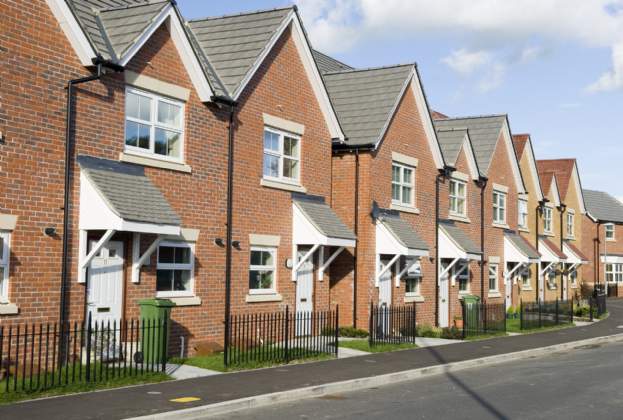Manifesto pledge
Labour first mentioned the idea of a grey belt in their Housing Plan announced in April this year and subsequently carried it over into their manifesto.
Committed to preserving the green belt, the party sought to differentiate themselves from the Conservatives by:
- Avoiding ‘haphazard’ release of the green belt ‘for speculative housebuilding’
- Maintaining the ‘purpose and general extent’ of the green belt
- Taking ‘a more strategic approach to green belt land designation and release to build more homes in the right places’
- Prioritising the release of lower quality ‘grey belt’ land and introducing ‘golden rules’ to ensure development benefits communities and nature
Now in government, the proposed national policy could be implemented in the autumn following a period of consultation and affect new local plan making from the end of the year.
So, what is the grey belt?
The first thing to note is that the use of the word ‘belt’ may be something of a misnomer. Unlike the green belt, which has been designed to encircle settlements to prevent urban sprawl, encroachment on the countryside and to keep settlements separate, the grey belt does not actually wrap around anything. Instead, Labour refer to it as ‘targeted release’ from green belt, more akin to infill development or proportionate urban extensions.
When campaigning, the party referred to:
- poor quality land, car parks and wastelands
- poor quality scrubland, mothballed on the outskirts of town
- a car park or similar land which does not affect the beauty of the countryside
- a disused petrol station
The draft NPPF defines it as land in the green belt comprising previously developed land and any other parcels and/or areas that make a limited contribution to the aim of the green belt, but excluding areas or assets of particular importance (i.e. land with an existing environmental designation).
The definition appears to indicate that grey belt will include quarries, car parks, golf courses, glasshouses, solar parks and leisure facilities such as caravan parks and camp sites. However, it will not include areas of importance such as habitat sites, sites of special scientific interest, local green space, national parks, designated heritage assets and areas at risk of flooding or coastal change.
Additionally, the government’s consultation goes slightly wider than the draft NPPF text and says that grey belt land must have at least one of the following features:
- Land containing substantial built development or which is fully enclosed by built form
- Land which makes no or very little contribution to preventing neighbouring towns from merging into one another
- Land which is dominated by urban land uses, including physical developments
- Land which contributes little to preserving the setting and special character of historic towns
How will the grey belt be set?
The answer to this lies across two different strands: local plan making and decision-taking.
Plan making
Under the proposed NPPF amendments, local planning authorities (LPAs) will remain responsible for defining and maintaining the extent of green belt within their jurisdictions as part of the Local Plan. However, the recent revisions go further than before – stating specifically that the ‘exceptional circumstances’ justifying green belt alterations include, but are not limited to, ‘instances where an authority cannot meet its identified need for housing, commercial or other development through other means’ (unless the arising alterations would ‘fundamentally undermine’ the function of the green belt).
LPAs will be directed to consider previously developed land first before moving onto grey belt sites and then finally green belt sites which can be made more sustainable (i.e. land near a train station).
As such, LPAs will need to be mindful of their housing land supply and delivery targets when determining whether they will need to allocate grey belt development land, and have full evidence of the quality of their existing green belt.
Decision-taking
Under the amended NPPF, LPAs are reminded that they should still regard building in the green belt as inappropriate – with any development only approved in very special circumstances (VSC) where the potential harm to the green belt is ‘clearly outweighed’ by other considerations.
There is opportunity for the grey belt to appear suitable for development in decision-taking, as the draft NPPF makes clear that green belt development should not be regarded as inappropriate where:
- development would utilise grey belt land in sustainable locations
- in the case of ‘major development’, the so-called ‘golden rules’ are satisfied:
- at least 50% affordable housing, with appropriate proportion of social rent, subject to viability
- it provides necessary improvements to local or national infrastructure
- it provides new or improved green spaces accessible to the public
- LPAs cannot demonstrate a five-year housing supply or where the Housing Delivery Test indicates less than 75% delivery over the previous three years
- there is a demonstrable need for land to be released for development of local, regional or national importance
Conclusion
While a definition of the grey belt has now emerged, it is mainly based on guiding principles. As such, there is significant scope for subjective interpretation, and we expect the industry to feel its way through the initial period before greater clarity emerges.
However, what the amendments make clear is that the green belt should not be a barrier to development per se – so long as the land in question is edge of settlement, or in an otherwise sustainable location; provides suitable affordable housing and local infrastructure; is not subject to an existing environmental designation; and does not serve – or significantly undermine – a green belt function.
Further information
Contact Lloyd King or Tom Sharman




.jpg)
.jpg)


.jpg)

.jpg)